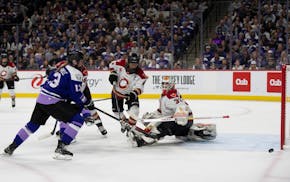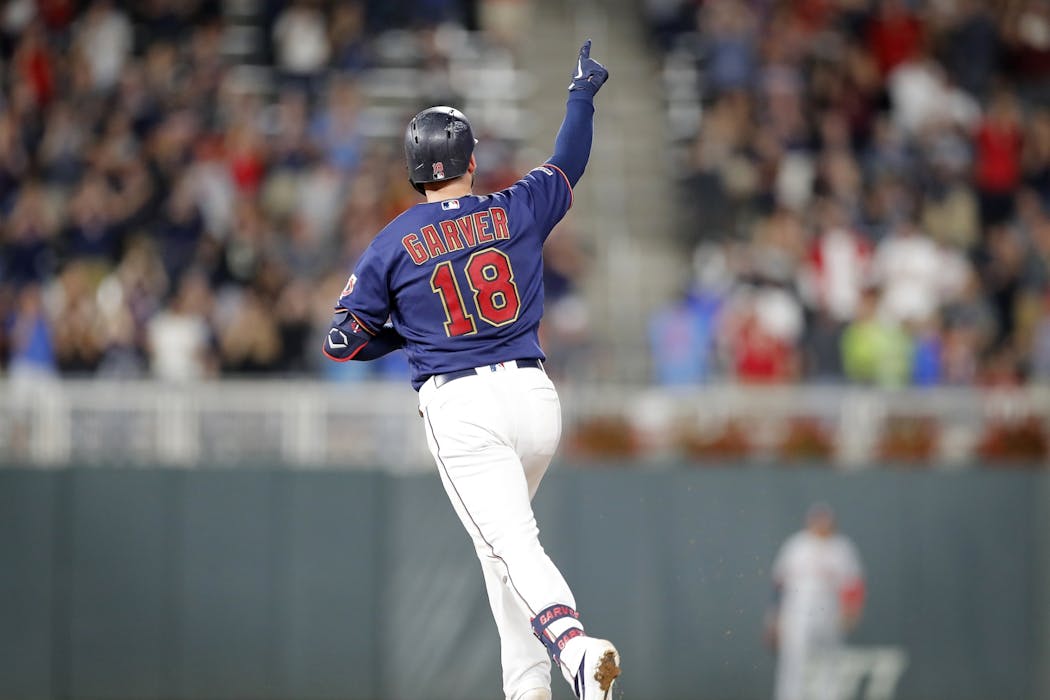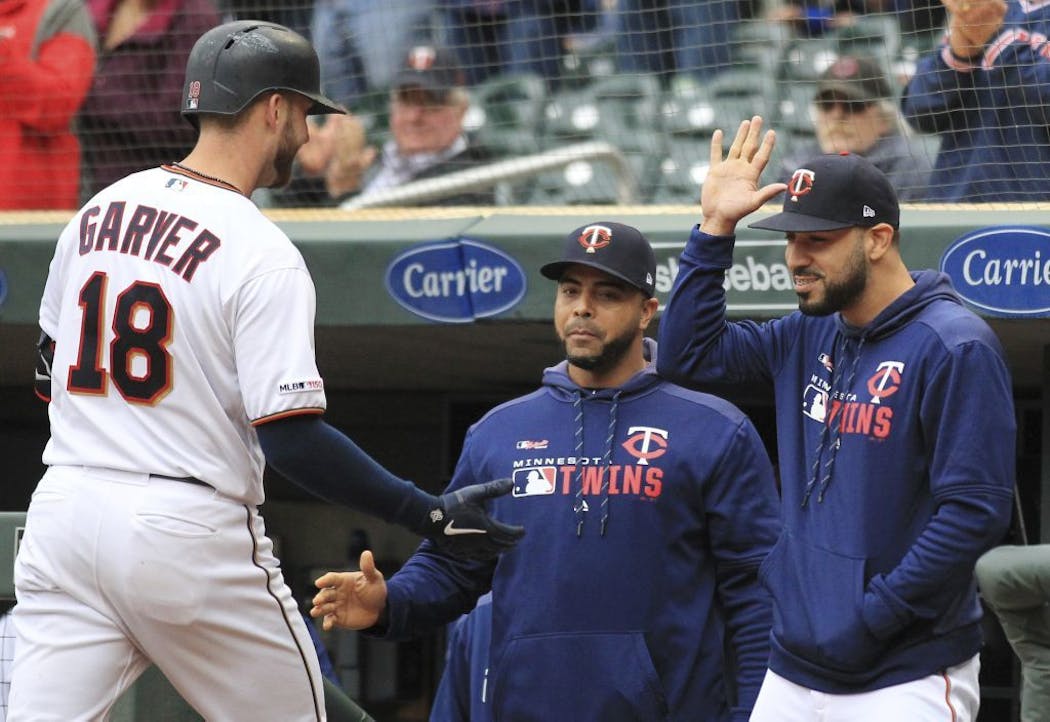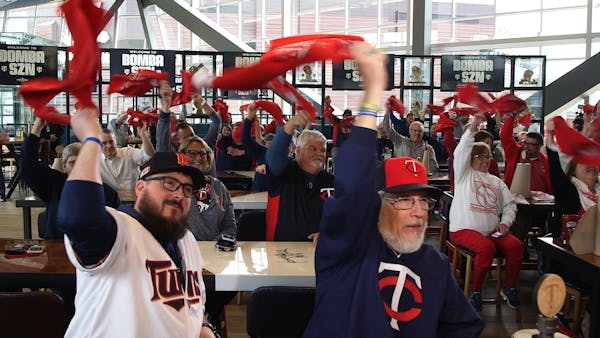Mitch Garver liked the sport but didn't love it. But he was good at it, so naturally skilled on defense that colleges showed interest and his high school coach encouraged him to pursue a professional career.
Soccer just wasn't his thing though.
As a center back on his state champion high school team in Albuquerque, N.M., Garver showed enough promise that his coach, an Englishman, floated the idea of Garver moving to England as a senior to train at a high-level European academy. That idea didn't go very far.
"I was terrified to do that," he says. "And soccer never really was my passion."
His heart belonged to baseball. The Twins are grateful for that.
Grateful, too, for a seemingly overnight transformation in his game, both offensively and defensively, that resulted in one of the most historic seasons by a catcher in Major League Baseball history.
From middling to mystifying in a blink, Garver's emergence as a power hitter ranks at the top of surprise developments that propelled the Twins to 101 wins, MLB's single-season home run record and a postseason appearance.
He broke Earl Battey's team record for home runs in a season by a catcher (26) with 30 (plus one as a designated hitter). His .630 slugging percentage ranks among the best by a catcher in MLB history. His home run per at-bat rate of 10.0 would rank slightly higher than league-leader Mike Trout's 10.4 if Garver had enough plate appearances to qualify.
Shocking, right? Not to Garver.
"I was ready for this to happen," he says.
The why and how isn't some secret formula, Garver says. Just hard work and a commitment to change, knowing his career teetered on the brink.
Buckets of sweat equity last offseason provided the framework for Garver to become a home-run masher and, more quietly, an above-average pitch framer after being one of the worst in the majors in that specific skill last season.
"I didn't wake up this good," he says. "It's not a mistake. It's not magic. I made myself."
• • •
Garver's power surge of 2019 has been a slow build beginning in 2016 when his Class AA manager, Doug Mientkiewicz, taught him to keep his hands back when he hit, creating more power. Garver stopped "punching" at the ball and learned to drive it. He hit 17 home runs in 372 plate appearances at Class AAA Rochester the following season.
Garver showed up to the facility in Fort Myers early one morning in 2018 spring training. Hall of Famer Rod Carew and minor league hitting coach Chad Allen were together in a batting cage. Garver jumped in and started hitting off a machine. He barreled up the first dozen pitches he saw.
"Hey, you need to get out of the cage," Carew joked. "You haven't missed."
Making contact wasn't his issue. Power was. Garver hit only seven home runs as a part-time catcher for the Twins last season, which he knew wouldn't make up for his defensive shortcomings.
Garver calls modern baseball the "OPS era." Success is viewed through a different statistical lens now.
"Driven balls, doubles, homers, RBI, on-base percentage … all that stuff is super important," he says. "That's how teams place a value on you."
His personal hitting coach put it a different way.
"The game is changing — you either get left behind or you evolve," Jason Columbus says.
• • •
Garver has known Columbus, a fellow Albuquerque native, since he was a kid. Columbus played college baseball at LSU and spent time in the minors. Columbus has served as a longtime hitting coach for Astros MVP candidate Alex Bregman.
Garver called Columbus this past winter and asked for help adding power to his game. Columbus notes that Bregman progressed from 19 home runs in 2017 to 31 last season to 41 this season.
"I said, 'I think you can do a lot of things very similar to Alex and have some really good results at the plate,' " Columbus said.
Together, they broke down Garver's hitting approach and focused every mechanical component on getting the ball in the air to left field.
They worked on finding an optimal contact point and how he positions the bat barrel behind his head to create the shortest swing. They tweaked his hips and elbow placement looking for loft. The idea was to implement physical cues into his swing. Columbus describes it as a swing "tuneup."
"He was trying to hit .300 and drive the ball the other way," Columbus says. "I'm like, 'Dude, you've got some serious power in there. And your right-field wall [at Target Field] isn't real friendly."
Garver hit off a machine every day for two hours. Columbus put the machine 35 feet from home plate, instead of the normal 60 feet, 6 inches. He set the speed at 75 miles per hour, which felt like 100 — or faster — from that distance.
Columbus moved the pitching machine to different positions, even extreme angles. He'd put it in direct line to where the second baseman or shortstop would stand, though much closer at 35 feet. Columbus wanted him to trust his swing with no wasted movement.
"I knew it was going to work," Garver says. "It was just a matter of trusting the process that we went through. I didn't know I was going to hit 30 [home runs]. Twenty was my goal coming into the year."
• • •
Validation in his changes came on April 9 against the Mets. Garver homered off Cy Young winner Jacob deGrom to center in his first at-bat.
"I don't go dead center very often," he says. "And that's 410 feet out there in cold Queens, New York."
He homered again off deGrom one inning later in his second at-bat. This is it, he told himself.
"Once I reached 10, 15, 18, 20 home runs," Garver says, "it's like, all right, now we're down to a refined skill."
The relationship between hitting and biomechanics fascinates Garver, who initially studied biology in college with the hope of becoming a chiropractor. As a young player, his approach was "see ball, hit ball." Now he thinks about the kinetic energy involved with his swing.
"You can't just stand there and stay static and then swing the bat," he says.
He isn't consumed by the launch angle craze, but he has a general sense from the path of the ball when it leaves his bat what the launch angle numbers will read.
"I know what 26 degrees look like," he says. "I know what 34 degrees looks like."
Hitting has become a game of chess to him. He knew pitchers would attack him with sliders away this season because he swung and missed at a lot of them last season, often outside the zone.
He's more patient now. He has the lowest percentage of swings on pitches outside the zone on the team at 17.4%. The league average is 28.3%.
Each day when he arrives at the ballpark, he studies the scouting report on the starting pitcher. He tries to find one pitch that fits his swing and can produce a home run.
"If I get it," he says, "I'm going to hit it in the air."
• • •
Garver's approach relies more on science and data than raw emotion.
"Baseball is an emotional sport, and people go out there and they just swing at something they like to swing at," he says. "If I'm not going to get 500 or 600 at-bats a year, why am I going to waste swings? I need to go at it with a more scientific approach."
His power output represents only his development at the plate. Dramatic improvement in his ability to frame pitches defines his progress behind it.
Garver says he ranked "dead last" among MLB catchers in pitch framing last season because "the people of Twitter told me that and I followed that [in analytics]." His weakness was framing low pitches.
Garver called Twins minor league catching coordinator Tanner Swanson last December and said, "If I don't learn how to catch the ball at the bottom of the zone, I'm not going to be a catcher anymore. I'm going to get released at some point in the next few years if I can't catch."
Swanson jumped on a plane two days later and visited Garver in Albuquerque. He showed him a presentation about changes the Twins have made throughout the organization with a catcher's setup, designed to improve pitch framing and optimize the strike zone with more called strikes.
Swanson adheres to a "one-knee setup," as opposed to a traditional squat. There are different variations, but basically Garver keeps one knee on the ground all the time, regardless of whether there are runners on base or not.
"There are not of lot of people that are catching in the big leagues like he's catching now," Swanson said. "Here he is on the greatest stage with the most to lose and for him to be able to take a risk like he did, I think it really has changed his trajectory as a player."
Garver's pitch framing dramatically improved, now ranking above average or higher in defensive metrics. Swanson said being on one knee allows Garver to capture low pitches for strikes more effectively without sacrificing his ability to block pitches in the dirt.
Swanson said those changes have made Garver an "elite everyday catcher."
"I have a tremendous amount of respect for him for trusting me and having the confidence in himself, knowing he might be criticized for it," Swanson said. "He bet on himself. It's now paying off."
Garver has bet on himself his whole career. Evolve or get left behind. He believed in what nobody else saw coming.
What is the 'House settlement,' and what does it mean for the Gophers and NCAA?

Souhan: Anxiety and depression in the NFL helped inspire Lindsey Young's children's book
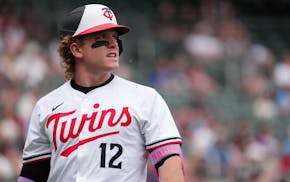
Twins lose second in a row to Blue Jays as bullpen falters late

Twins pitcher Ober struggling to regain fastball velocity
